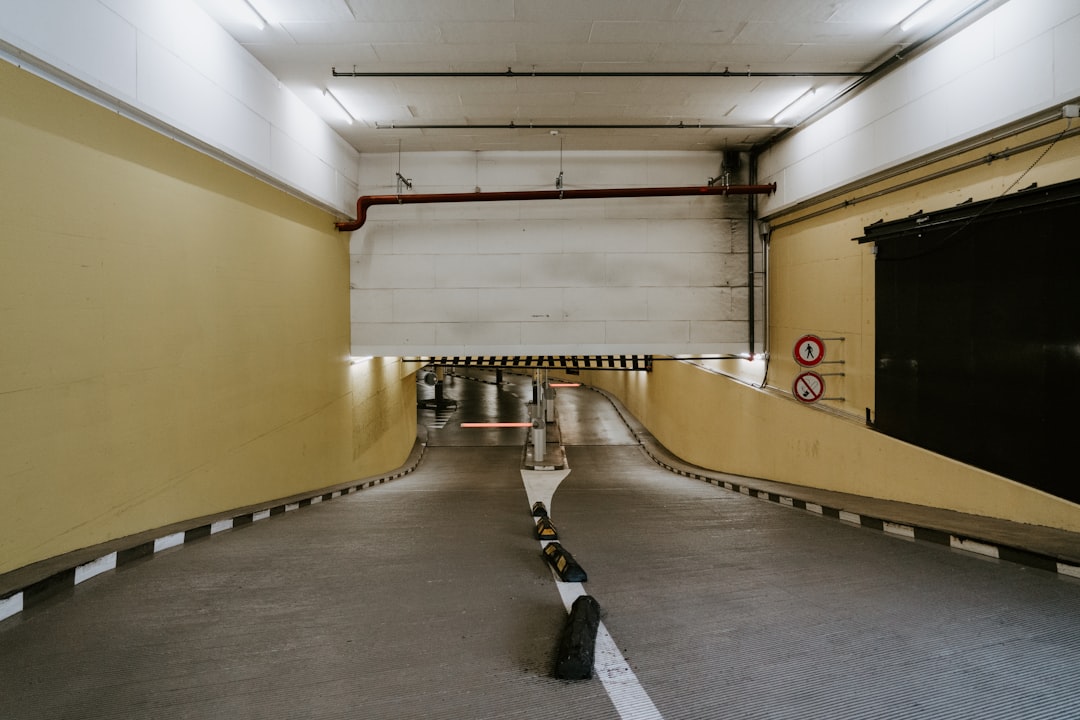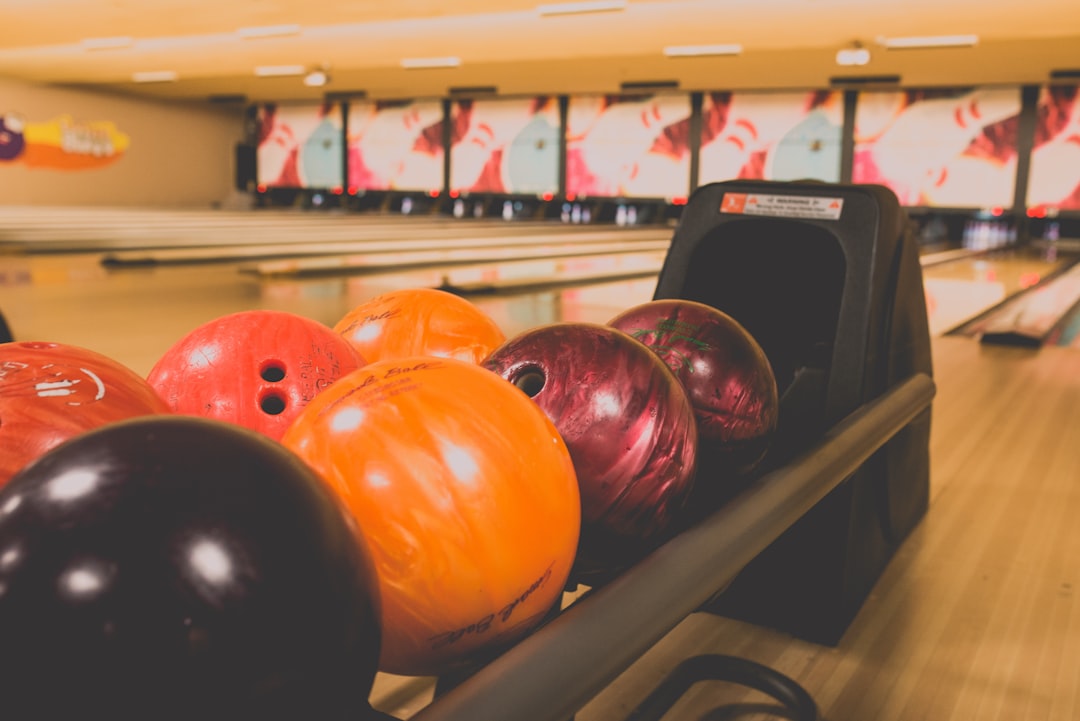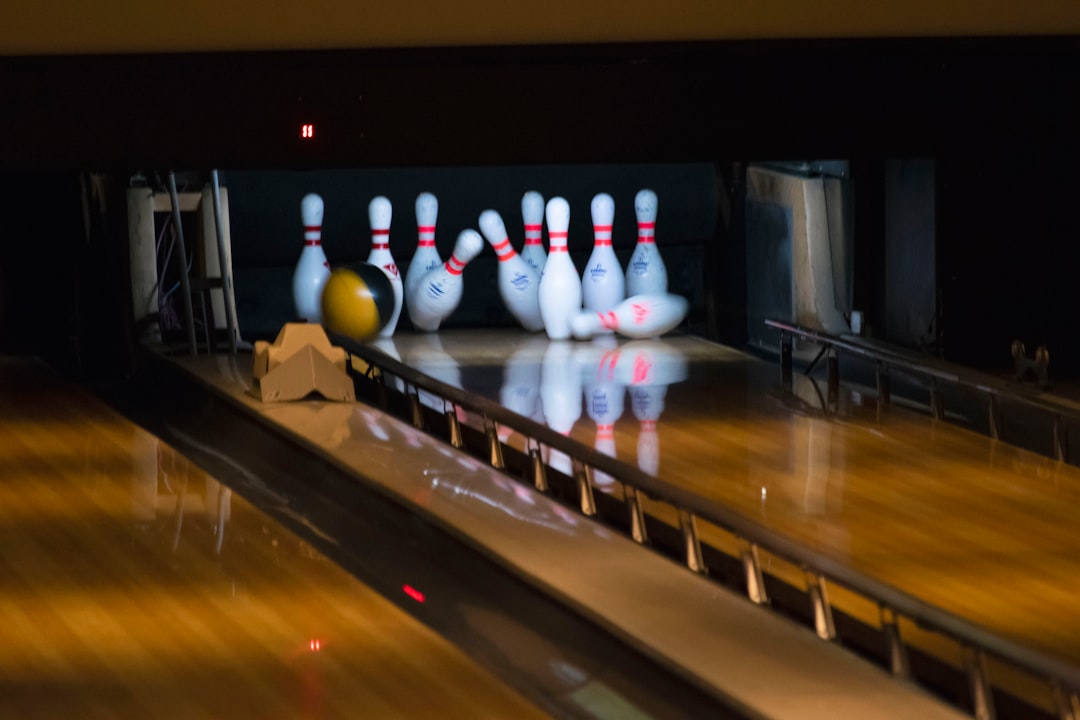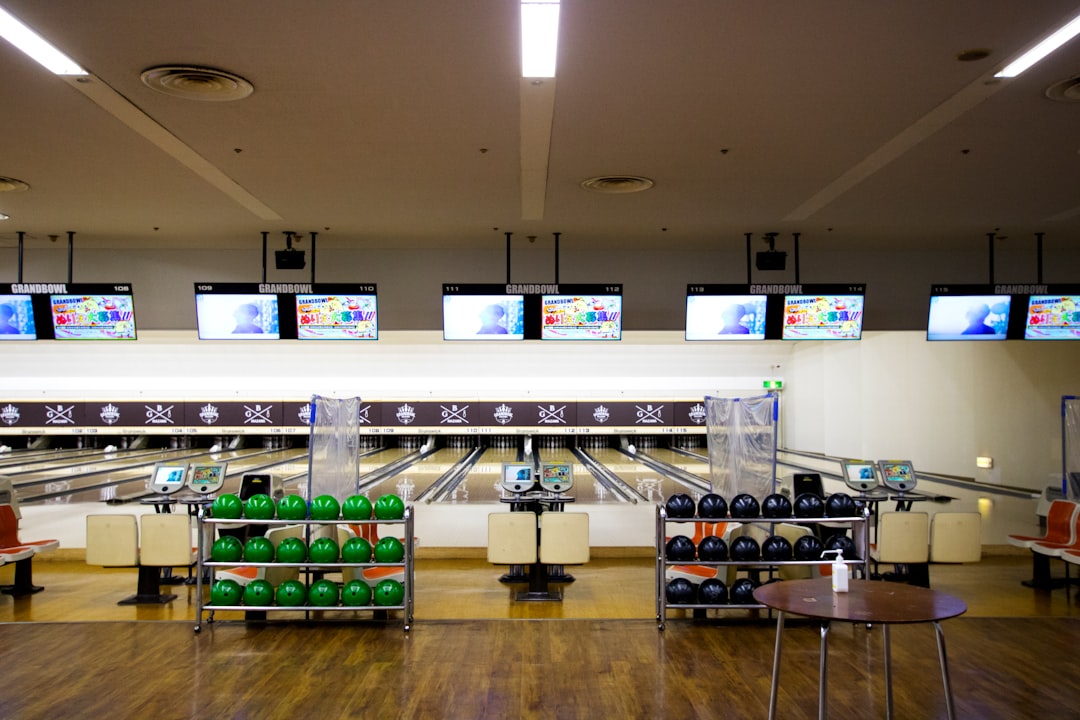

Engage prospects with a scan and streamline customer engagement with FREE QR code marketing tools by Sona – no strings attached!
Create a Free QR CodeFree consultation

No commitment

Engage prospects with a scan and streamline customer engagement with FREE QR code marketing tools by Sona – no strings attached!
Create a Free QR CodeFree consultation

No commitment
QR codes have become a strategic tool for seamlessly bridging offline engagement with online action in bowling lane repair services. They offer an effective way to elevate the customer experience, streamline communication, and modernize repair scheduling, all without requiring app downloads or complex navigation. In an environment where lane uptime directly impacts revenue, QR codes deliver the speed and clarity technicians and managers need to act fast and document precisely. For a broader view of adoption in centers, see these bowling industry insights.
Bowling alley operators often struggle with coordinating timely repairs and maintaining clear communication about facility issues, especially when relying on outdated manual processes. Placing QR codes at strategic locations enables staff and managers to access diagnostics, maintenance logs, and repair forms instantly, guided by Sona QR’s use case library, ensuring no repair need or service opportunity is overlooked. Instead of hunting for binders, calling managers for authorizations, or waiting for computer access, teams get answers at the point of need.
Replacing paper work orders and manual logs with digital QR workflows not only improves operational visibility but also surfaces valuable insights for faster repairs and improved accountability. By making repair interactions trackable and centrally managed, QR-driven processes help reduce missed opportunities and enhance the overall client experience. With dynamic links and integrated analytics, every scan becomes an actionable signal that tightens feedback loops and accelerates resolution. See Sona QR’s product overview for how this works.

QR codes connect physical lane equipment to digital service workflows, making repair processes smoother and service calls more efficient. Lost repair opportunities and wasted technician time often result from incomplete problem reports. Many bowling centers struggle to prioritize repairs when important maintenance logs or service requests are not surfaced in real time. QR codes replace analog choke points with mobile-first actions that anyone can execute in seconds, even during busy league nights. For a look at real-world results in entertainment venues, review this QR system in bowling.
The shift is simple but powerful: move from clipboards, whiteboards, and phone trees to scan-to-report, scan-to-troubleshoot, and scan-to-schedule using google forms QR. Instead of relying on memory or paper slips that get misplaced, a QR-led process routes issues to the right queue with the right context, then confirms status to the submitter. This transparency reduces repeat calls, raises first-time fix rates, and gives management real-time visibility across all lanes and machines.
Outdated processes like handwritten repair slips, laminated checklists, and end-of-shift verbal handoffs are replaced with structured forms that can require essential fields. Photos, problem category, lane number, asset type, and urgency can be captured instantly, then routed to the right on-call tech. Yes, Sona QR is built to support every step of this transformation: creation, design, distribution, analytics, and CRM integration, all from a single platform.
By integrating QR touchpoints, bowling lanes upgrade to proactive, digital-first workflows supported by centralized management and automated reporting. Maintenance becomes more unified and actionable, reducing missed opportunities and turning every unplanned interruption into a documented, measurable workflow that feeds continuous improvement.

Bowling alleys rely on fast, dependable repairs to keep business running and patrons happy, but manual checklists and outdated tracking often leave repair needs unaddressed. QR codes close the gap between a physical problem and a digital action. When a lane malfunctions, anyone on shift can scan a code and trigger the right workflow in seconds, rather than searching for the correct binder or waiting for a supervisor to respond.
QR codes also bring consistency. Instead of one technician documenting thoroughly while another offers minimal detail, QR forms can enforce required fields and prompt for critical context. Over time, this standardization improves troubleshooting, reveals root causes, and simplifies training because teams can compare outcomes across lanes and shifts.
In practical terms, QR codes can live on appointment cards, service stickers, training station posters, machine guards, and vendor invoices. A small sticker on each lane console can link to a quick report form that pre-fills the lane number, while a poster in the shop links to the weekly maintenance checklist. These touches build habits that keep data flowing, documentation accurate, and schedules predictable. Start with stickers and labels and reinforce with posters.

QR codes help overcome disconnected processes and fragmented documentation by routing each scan to the right destination. Selecting the proper format ensures the fastest path to action and the cleanest data for analysis.
For bowling lane repair, the most useful formats tend to be web links for forms and guides, SMS or email for escalations, and Wi-Fi access for visiting techs who need connectivity. With Sona QR, you can generate any of these formats, manage them centrally, and update destinations without reprinting stickers or signage. Start creating QR codes for free.

Physical environments like bowling alleys often miss segmented repair opportunities when messaging is inconsistent or instructions are unclear. Strategic QR placement ensures that the moment of need is always connected to a clear next step, whether that is reporting a problem, checking a guide, or ordering a part. For broader promotion ideas, see this bowling marketing strategy.
Focus on placements that align with specific jobs to be done. For example, place issue-reporting codes where frontline staff stand during gameplay, and diagnostic codes where technicians open panels or service machinery. This context-aware approach boosts scan rates and data quality because the code is useful in the exact moment it is encountered.
Optimal placements ensure each interaction is trackable and actionable. Ad hoc reporting becomes structured analytics, which helps managers discover chronic issues, balance technician workload, and justify capital investments with data.

Strategic QR deployments map to moments that matter in daily operations. Rather than generic codes that go to a homepage, each code should serve a specific purpose tied to a known outcome. Below are high-impact use cases tailored to bowling lane repair, each designed to reduce friction and increase accountability.
Preventive upkeep often slips during busy periods when discretionary tasks lose out to immediate lane outages. A QR code on the machine guard or maintenance panel can link to a weekly or monthly checklist that requires time-stamped completion and photo verification. You can also add short videos demonstrating critical steps such as belt tension checks or solenoid cleaning.
The outcome is a measurable increase in compliance with maintenance schedules and a reduction in avoidable breakdowns. Over time, you can correlate completion rates with downtime to justify staffing or equipment upgrades.
Sticky ball returns, mis-spotting pins, scoring faults, and foul light errors are common disruptions. A QR code on the lane console or approach area can route staff to a form that captures the lane number, problem category, severity, and photos in under 30 seconds. The form can also guide the submitter through a quick reset protocol before escalating to a tech.
This leads to faster triage, fewer unnecessary callouts, and cleaner data for the repair team. First-time fix rate improves because technicians receive context before they arrive, including any steps already attempted.
New hires and cross-trained staff need ready access to standard operating procedures. QR codes on training boards or tool carts can link to SOP libraries, safety sheets, and vendor-approved repair videos. Dynamic links ensure content stays current without repainting signage.
The result is more consistent repairs, a shorter ramp time for new hires, and fewer errors caused by outdated instructions. Training content can also be tailored to specific machines or models by scanning the relevant asset code.
A QR code placed on parts bins or within the parts room can connect directly to reorder forms or an inventory management system. Staff can scan to reorder frequently used items, check stock across locations, and verify compatibility with specific models.
This reduces out-of-stock delays and improves inventory accuracy. Auditable histories make it easier to forecast usage, negotiate pricing with vendors, and prevent unauthorized substitutions that cause repeat failures.
While most QR codes will be staff-facing, select customer-facing codes can be helpful. For example, a subtle code near the front desk can allow league captains to report recurring lane issues that occur outside staff observation, feeding directly into the maintenance queue. Add a google reviews QR to collect public feedback when appropriate.
This broadens your signal coverage so recurring problems are captured quickly and tied to the correct assets. It also demonstrates responsiveness to league and tournament customers who depend on consistent conditions.
These workflows support account-level tracking and faster responsiveness. With Sona QR, you can make each destination dynamic, tag scans by asset and location, and analyze outcomes to refine your maintenance program.
Every QR scan during a repair or maintenance task captures valuable context: who scanned, where, when, and for what purpose. This data is useful beyond operations. It can shape targeted communications that educate staff, inform management, and help vendors deliver better support. When you distribute QR codes along the maintenance journey, you create distinct segments that enable precision follow-up. For strategic context, explore Sona’s intent data guide.
For example, scans on preventive maintenance checklists differ from scans on urgent repair forms. By tagging each scan with the lane number, asset category, and use case, you can tailor the follow-up content. Preventive maintenance scanners might receive training refreshers and parts bundle offers. Urgent repair scanners could trigger shift alerts or escalate to vendors if thresholds are exceeded.
Industry-specific distinctions matter. In bowling, you might distinguish between scans from front-of-house staff versus back-of-house technicians, or between single-center managers and regional operations leaders. This nuance lets you position the right training, service packages, or upgrade recommendations to the right stakeholders at the right time.
Disconnected campaigns cause inconsistent messaging and missed urgent repairs. QR codes unify acquisition, support, and retention workflows by making print and physical surfaces measurable and actionable. For bowling lane repair services, the marketing engine is not just about acquiring new accounts. It is about delivering a reliable, accountable maintenance experience that wins renewals and referrals.
Use QR codes to connect every channel with a clear outcome. A proposal packet can link to a scheduling page and case studies. A trade-show handout can route prospects to a diagnostics demo. Facility signage can turn anonymous offline interest into a known, engaged contact whose role and needs are understood.
QR codes serve as the offline onramp to your digital operations and marketing engine. With a centralized platform like Sona QR, you can manage all your codes, monitor performance, and sync scan data with your CRM and ad platforms so field activity translates into pipeline, renewals, and upsells.
Start with a single, high-impact use case so your pilot is easy to deploy and simple to measure. For bowling lane repair, two strong options are scan-to-report for lane issues and scan-to-checklist for preventive maintenance. Each directly reduces downtime, captures indispensable data, and builds confidence in your new workflow.
Define a clear outcome. For example, you might target a 25 percent reduction in average time to log an issue or a 30 percent increase in preventive checklist completion within 60 days. Clarity on the outcome guides your code design, placement, and messaging.
Choose dynamic QR codes when you need flexibility and analytics. Dynamic codes powered by Sona QR let you change destinations without reprinting and capture scan data like time, device, and location. Static codes can work for fixed assets, such as a link to a PDF safety sheet that rarely changes, but they will not offer robust tracking.
Map the code type to the task. A scan-to-report form should be dynamic so you can improve it over time and experiment with fields. A vCard for a regional vendor can be static if the contact is stable. For most operations use cases, dynamic is the better long-term choice.
Design for clarity and speed. Add your logo, brand colors, and a high-contrast frame so the code stands out. Place a benefit-driven CTA immediately adjacent to the code. For example, Scan to Report Lane Issue or Scan for Weekly PM Checklist. Make sure the landing page mirrors the CTA language so users feel confident they are in the right place.
Test scannability in the real environment. Try different device types, scanning angles, lighting conditions, and distances. Confirm that labels remain legible after lamination or protective covering. Run a small pilot on a few lanes before scaling across all assets.
Roll out your QR codes where they will be used most. In bowling centers, this typically means lane consoles, ball returns, machine panels, service bays, the parts room, and staff bulletin boards. Supplement with QR-enabled print collateral in proposals, renewal packets, and service agreements to connect offline discussions to online scheduling.
Match placement to audience behavior. A QR code for emergency escalation belongs in the service bay where techs congregate, not only on a public-facing sign. Conversely, a general report-an-issue code can be discretely placed near the front desk for quick capture by floor staff.
Instrumentation is the difference between a novel sticker and a revenue-driving workflow. Use Sona QR to track scans by time, location, device, and referrer. Attribute scans to outcomes such as work orders created, checklist completion, parts orders placed, or SLAs met. Review this data weekly to identify bottlenecks and opportunities.
Run small experiments. A/B test CTAs, code size, and placement. Adjust form fields to streamline submissions while preserving data quality. Use UTM parameters to distinguish among media types and campaigns. Share wins broadly to reinforce adoption and encourage consistent usage across shifts and locations.
Incomplete data causes missed opportunities and frustrated customers. QR solutions convert every scan into actionable information that improves operations and supports business growth. By linking scans to assets, work orders, and outcomes, you can quantify the value of faster triage and better documentation. Over time, this proof turns operational excellence into revenue through renewals, upsells, and referrals.
Knowing someone scanned a code is useful, but the real power is understanding the downstream impact. Did the scan lead to a completed form, a technician dispatch, or a parts reorder? Did it reduce time to resolution or increase first-time fix rate? Traditional tools stop at the scan. With Sona QR and Sona.com, you get full-funnel visibility so you can connect scan activity to pipeline and closed revenue.
The result is a closed-loop system. Sona QR captures real-world engagement. Sona.com turns that engagement into insights you can act on. Together they help you connect scans to revenue, demonstrate the ROI of your maintenance program, and make QR codes part of a measurable operations and marketing strategy.
QR codes deliver the biggest impact when they support a clear process, live where the action happens, and feed back into systems that drive accountability. As adoption grows, standardize how you create, place, and measure codes so results are consistent across locations and teams.
Start with a few high-visibility placements, gather feedback from users, and iterate quickly. Share learning openly across shifts and locations. Managers should recognize teams that embrace the process, especially when data shows improved uptime and faster resolutions that delight bowlers and league leaders.
Creative deployments can amplify results. For example, include QR codes on technician ID badges that verify credentials and link to role-specific SOPs. See badges. Add QR codes to invoices that let managers approve quotes or reorder parts with pre-filled forms. Laminated QR maintenance logs that get digital updates are an effective way to build retargetable audiences and keep prospects engaged for future service offerings.
For bowling lane repair services, QR codes go far beyond convenience. They are a practical strategy for unlocking operational efficiency, elevating customer experience, and creating measurable growth opportunities. Each scan is a chance to capture context, streamline workflows, and accelerate resolution from identification to solution. Over time, these micro-moments add up to fewer breakdowns, faster recoveries, and stronger relationships with bowlers and facility owners.
With the right strategy, bowling operators can use QR engagement data to optimize service, ensure consistent messaging, and drive higher-value outcomes across the operation. Standardized workflows reduce ambiguity. Dynamic content keeps training and SOPs current. Analytics transform field activity into insights that drive better decisions on staffing, inventory, and capital investments.
Bowling lane repair services that integrate QR code technology future-proof their operations, unlocking new value from every repair interaction and customer touchpoint. By centralizing scan activity and analytics with Sona QR and Sona.com, businesses can optimize for reduced downtime, higher satisfaction, and measurable revenue impact. Advanced tools now make it possible to connect every engagement, whether from staff, managers, vendors, or customers, into a single, actionable workflow that mitigates missed opportunities and ensures communications stay consistent, relevant, and timely. If you are ready to streamline maintenance and capture new opportunities for growth in the bowling industry, generate and track your first QR codes with Sona QR and start seeing results in minutes.
QR codes have revolutionized the bowling lane repair services industry by turning traditional service processes into seamless, interactive experiences. Whether it’s streamlining service requests, providing instant access to repair guides, or enhancing client communication, QR codes replace outdated methods with efficient, trackable digital touchpoints that drive faster response times and higher customer satisfaction. Imagine instantly connecting your customers to detailed repair information or booking forms with a simple scan—boosting trust and repeat business effortlessly.
With Sona QR, you can create dynamic, trackable QR codes in seconds, update content on the fly without reprinting, and link every scan to actionable data that improves your service operations and customer engagement. No more missed opportunities or guesswork—just smarter, more effective service delivery that grows your business.
Start for free with Sona QR today and transform every scan into a streamlined repair request, a satisfied customer, or a loyal client.
Common issues include sticky ball returns, mis-spotting pins, scoring faults, foul light errors, repeated jams, and equipment breakdowns such as problems with pinsetters, ball return systems, and lane consoles.
Preventive maintenance checklists are typically completed weekly or monthly to ensure timely upkeep and reduce avoidable breakdowns.
QR codes streamline repair scheduling, enable instant reporting and diagnostics, replace manual logs, improve communication, enforce required repair details, provide real-time visibility, and help track and analyze repair data to reduce downtime.
Signs include frequent equipment malfunctions, repeated jams, sticky ball returns, scoring faults, pin mis-spotting, foul light errors, and any unplanned interruptions affecting gameplay.
Professional services can be located by using digital tools like Sona QR platforms and industry resources such as Brunswick Sync for equipment support, or by consulting local bowling center service providers.
QR codes link to time-stamped checklists and video instructions, increasing compliance with maintenance schedules and reducing equipment downtime.
Web links for forms and guides, SMS or email templates for escalations, and Wi-Fi access codes for visiting technicians are the most useful QR code formats.
Start with high-impact use cases like scan-to-report for lane issues or scan-to-checklist for maintenance, choose dynamic QR codes for flexibility and tracking, design clear calls to action, deploy codes at key locations, and track usage to optimize processes.
The article does not specify exact costs for bowling lane repairs.
Regular preventive maintenance on a weekly or monthly basis and prompt repair reporting through digital workflows help minimize downtime and improve lane uptime.
Use Sona QR's trackable codes to improve customer acquisition and engagement today.
Create Your FREE Trackable QR Code in SecondsJoin results-focused teams combining Sona Platform automation with advanced Google Ads strategies to scale lead generation

Connect your existing CRM

Free Account Enrichment

No setup fees
No commitment required

Free consultation

Get a custom Google Ads roadmap for your business






Launch campaigns that generate qualified leads in 30 days or less.
